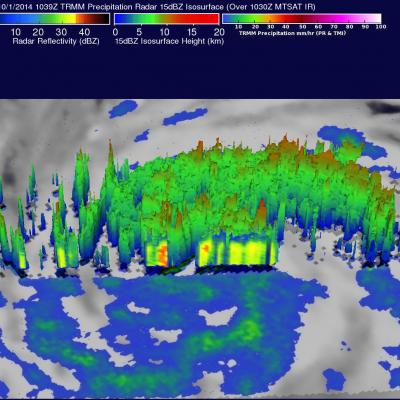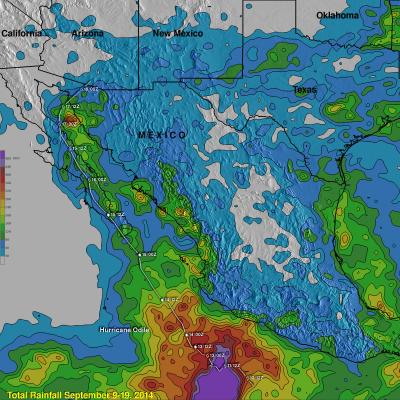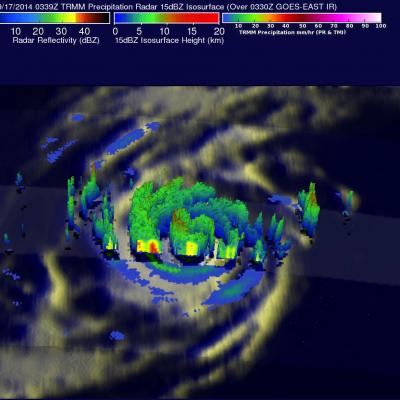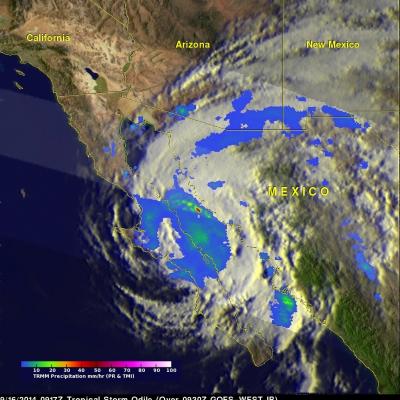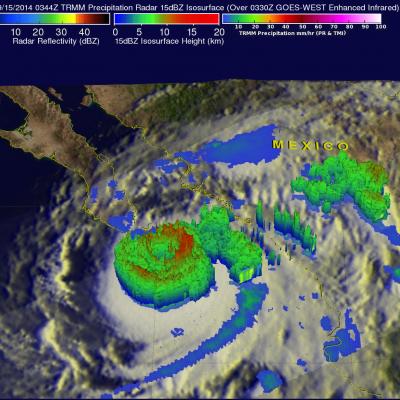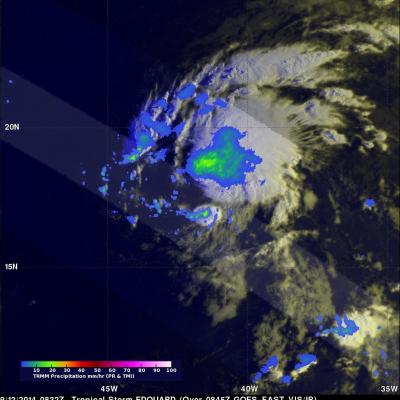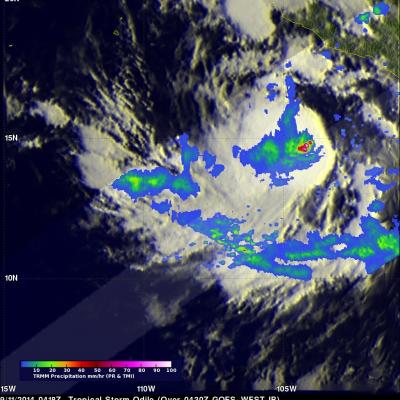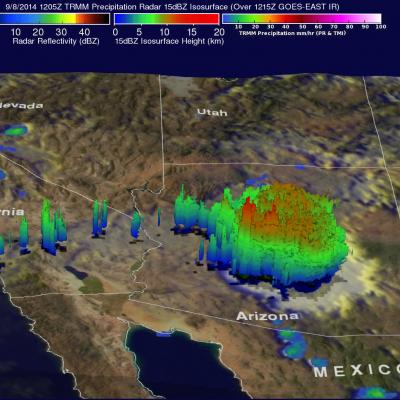Typhoon Phanfone Heads Toward Japan
An intensifying typhoon called Phanfone that originated east of Guam on September 28, 2014 is headed toward southern Japan. The TRMM satellite crossed above typhoon Phanfone on October 1, 2014 at 1039 UTC. Rainfall that was made from TRMM's Microwave Imager (TMI) Precipitation Radar (PR) data collected with this orbit is shown in this image. Typhoon Phanfone's winds were estimated to be above 65 kts (about 75 mph) at the time of this TRMM view. Winds within the increasingly powerful typhoon are are expected to increase to over 100 kts (115 mph) in the next few days while moving toward the


